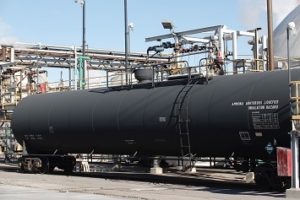Prevent Ammonia Releases During Loading and Unloading Operations
On June 12, 2017, hazardous materials (hazmat) crews were called to a South Texas Cold Storage in Corpus Christi, Texas. A cooling unit at the facility was leaking ammonia. Nearby residents were instructed to shelter in place while hazmat crews controlled the leak. That same day, in Phelps, New York, two homeowners became ill after an ammonia tank at a neighboring facility released ammonia. The residents were evacuated, and the spill was cleaned up. BrianBrownImages / iStock / Getty Images Plus / Getty Images
BrianBrownImages / iStock / Getty Images Plus / Getty Images
 BrianBrownImages / iStock / Getty Images Plus / Getty Images
BrianBrownImages / iStock / Getty Images Plus / Getty Images
These two incidents were among a handful of ammonia releases in May and June. Releases in Kansas, Nashville, and Chicago also made headlines. The use of ammonia is widespread and common, especially in large-scale refrigeration systems. Releases can pose fire and explosion hazards; they can also pose a health hazard to both workers at the site and anyone within range of the plume.
Ammonia leaks are more likely during certain operations or circumstances. Yesterday we looked at ordinary operations and shutdowns; today we’ll look at loading and unloading operations. Here’s how you can prevent leaks during those transfers.
Loading and Unloading Operations
During loading and unloading operations, when ammonia is being transferred between railcars or tank cars and stationary facilities, there is an increased risk of release. Mechanical integrity is extremely important during this operation. Ensure mechanical integrity by:
- Choosing appropriate hoses. Hoses should be designed according to generally accepted good engineering practices.
- Implementing regular inspection and testing. Hoses should be subject to routine inspection and testing as part of the facility’s mechanical integrity program.
Proper training also prevents releases; it is vital that workers know:
- How to check fill levels. It is important not to overfill vessels during loading and to ensure that storage space is adequate to receive the ammonia during unloading operations.
- How to work with hoses. Train workers to properly connect and disconnect hoses, including how to properly empty and vent hoses and pressure relief valves, before disconnecting them. Training should cover the proper use of bleeder valves. Workers should also know how to properly handle, stow, and care for hoses.
- How to secure tankers. Wheel chocks can prevent tank cars and railcars from moving during unloading operations. Workers should disconnect and secure both ends of hoses before moving a vehicle.
- How to avoid exposure. Workers should wear personal protective equipment during loading and unloading operations and should not stand in line with the ammonia discharge while venting pressure relief devices and hoses.
- How to safely load from cylinders. When loading from cylinders, it is important to connect and disconnect lines properly and to empty and vent lines before disconnecting, just as when loading or unloading tanks. In addition, workers must know how to properly secure cylinders.
- Never to walk away. No charging operation should be left unattended.
No comments:
Post a Comment